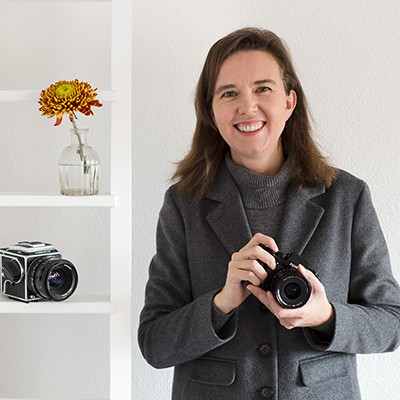7 guaranteed methods for sharper images
1. Use a tripod
The most common reason for blurred or soft images is camera shake. No human can hand-hold a camera perfectly still. If you are using a very short shutter speed it won't matter, but if you are using slower speeds (even 1/60th or so), you will see a huge improvement if you take your hands off the camera at the point the shutter fires.
- use a tripod (or a pile of books, or a beanbag - anything to hold the camera steady)
- use a cable release or self timer
- if you are shooting macro, use the mirror lock up as well to minimise in-camera vibrations
Further reading: Which Tripod To Buy?
2. Depth of field
Invest a weekend to really understand how aperture controls depth of field, and how depth of field in turn controls which section of your image is sharply in focus. Don't forget depth of field is also affected by how close you are to your subject, and what the focal length of your lens is.
Do you need more help with this? Join my free online beginner's photography course here - we cover everything you need to know:
3. Where are you focussing?
Are you sure you are focussing on your subject? Do you know how to switch from auto focus to manual focus? If not, download your camera manual and look it up.
A more advanced technique is to utilise hyperfocal distance. Once you understand how aperture affects depth of field, you can control exactly where the depth of field falls in your image by changing the focus spot. This article from amateur photographer magazine has a comprehensive description of how to try this technique.
4. Keep your ISO low
Higher ISOs will result in softer images, with digital noise artefacts becoming visible. If you use Auto ISO you can probably limit the upper ISO if this is important to you.
5. Clean your lens
Use a dedicated, clean lens cloth for this, or specialist lens wipes. Check and clean your lenses before each shoot.
6. Test your lens for sweet spot, or get a more expensive lens
Each lens has an aperture at which it shoots at optimum clarity - the so-called "sweet spot". You can look these up online, or run your own tests. Shoot the same subject at all your apertures, and examine them closely at 100% magnification. You can download test cards for this, if you want to be very precise. If you don't need to know exactly, f8 is probably your sweet spot. You should avoid shooting at the extreme apertures (widest and smallest), and understand that you'll get the sharpest images away from the extremes.
There's no denying that more expensive lenses have higher quality glass, and less elements, both of which will give sharper images, all other things being equal. Prime lenses generally give sharper images for the same reason - less glass and less moving parts.
7. sharpen in post processing
If you have Lightroom or Photoshop, learn to sharpen effectively. In Lightroom especially, hold down the option/alt key while you drag the sliders, to preview the areas being sharpened. More details here: Capture sharpening in Lightroom. Always work at 100% when you sharpen images, and never work on the original. The amount of sharpening needed depends on the output (print/screen). It's easy to overdo sharpening, so always step away from the screen and come back after a break to see the finished image.
The header image for this blog post was my shot that was shortlisted in the International Garden Photographer of the Year award. I didn't have a tripod, so I rested my camera on the low fence that surrounds the lily pool at Kew gardens. It was important to keep the ISO low, but I also needed front-to-back sharpness, so I did need to use the hyperfocal distance technique to maximise the available depth of field. It was shot with a very high-quality lens (the Canon 11-24mm f4) but on a medium quality camera (the Canon 6D).
The critical part of the whole process was in the editing - it took about a day in total of comparing and contrasting different edits until I got the finished image. A combination of selective sharpening and the clarity slider was used.


